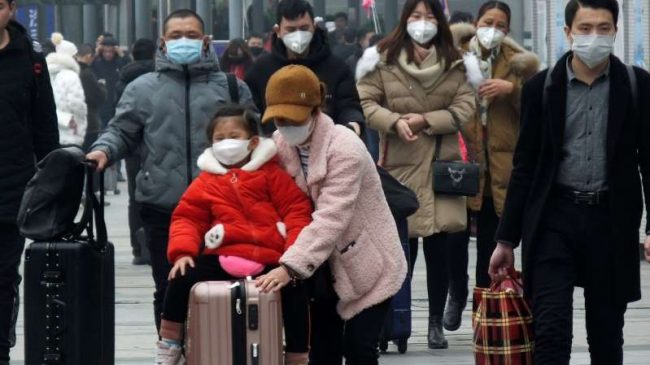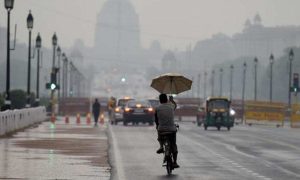An international outbreak of respiratory illness caused by a novel coronavirus has killed at least 41 people and sickened at least 1,300, according to Chinese health authorities.
The outbreak began in Wuhan, China, at a market selling live poultry, seafood and wild animals. Now the virus has turned up in Japan, South Korea, Thailand, Singapore, Taiwan, Vietnam, Nepal, France, Australia and the United States. Investigators in still other countries, and in several American states, are evaluating possible cases.
Officials in China have closed transportation links from and within Wuhan and other affected cities. The move was a significant escalation in the country’s attempts to contain the virus as millions embarked on holiday travel for the Lunar New Year.
Two cases have been confirmed in the United States: in a Washington State man in his 30s who had recently traveled to China; and in a woman in her 60s in Chicago, also returning from China.
But much is still unknown about the newly identified virus, including how easily it is transmitted and how often it causes severe disease that can lead to death. Many of those who died in China were elderly individuals with pre-existing chronic conditions that may have made them more vulnerable to the infection.
Here’s what we know so far about the virus and the outbreak.
What is a coronavirus?
Coronaviruses are named for the spikes that protrude from their membranes, which resemble the sun’s corona. They can infect both animals and people, and can cause illnesses of the respiratory tract, ranging from the common cold to dangerous conditions like Severe Acute Respiratory Syndrome, or SARS, which sickened thousands of people around the world — and killed nearly 800 — during a 2003 outbreak.
How dangerous is it?
Health officials around the world are alarmed, but it’s hard to accurately assess the lethality of a new virus. On Thursday, the World Health Organization declined to declare the outbreak a global health emergency.
“When we get a new infectious disease, we learn about the most severe cases first, the top of the pyramid, as it were,” said Dr. William Schaffner, professor of preventive medicine and infectious diseases at Vanderbilt University Medical Center. “As the investigation goes on, we often learn there are less severely infected people, and even people who are infected who don’t get sick at all.”
By comparison, roughly 200,000 people are hospitalized with the flu each year in the United States, and about 35,000 people die.
But while some scientists say the new virus appears to be less severe than other coronaviruses, like SARS and MERS, it is not clear whether Chinese authorities have been fully transparent about the number of infections and deaths, or even whether these figures are being carefully tracked.
“The information we know is changing rapidly,” said Dr. Julie Vaishampayan, chairwoman of the public health committee of the Infectious Diseases Society of America. “Whenever a new virus comes out, it takes a while to learn about it. There are going to be a lot of changes.”
How is it transmitted?
Scientists still don’t know exactly how the virus spreads, but it can be transmitted from person to person, which makes it a bigger risk than if it were carried only from animals to humans, said Dr. Peter Rabinowitz, a director of the University of Washington MetaCenter for Pandemic Preparedness and Global Health Security.
It is most likely transmitted through coughing and sneezing, as is the case with influenza and other respiratory viruses, said Dr. Vaishampayan.
The Chinese Center for Disease Control and Prevention analyzed 198 confirmed cases in Wuhan. Researchers found that 22 percent had direct exposure to the meat market, and 32 percent had contact with people who had a fever or respiratory disease.
But roughly half had neither been to the market nor had contact with anyone who was sick. Sixteen health care workers were infected while caring for patients, the report said.
How many people have been infected, and how many have died?
At least 1,300 people are known to have been infected, and at least 41 have died. Most of those infected lived in Wuhan, a city of 11 million in central China, or had recently traveled there.
Of those who died, many were older men with pre-existing chronic health problems, like diabetes and high blood pressure, that made them susceptible to complications.
Where did the new coronavirus outbreak start?
On Jan. 8, The New York Times reported that Chinese researchers had identified a new coronavirus as the pathogen behind a mysterious illness that had sickened 59 people in Wuhan.
The cases were linked to workers at a market that sold live fish, animals and birds. The market was later shut down and disinfected.
What treatment is available?
No drugs are approved for the Wuhan coronavirus. The main treatment is supportive care, including making sure the patient is getting enough oxygen, and using a ventilator to push air into the lungs if necessary, Dr. Vaishampayan said.
Patients should rest and drink plenty of fluids “while the immune system does its jobs and heals itself,” she said.
No drugs have been approved for any coronavirus diseases, though an antiviral medication called remdesivir appears to be effective in animals.
Officials with the National Institutes of Health said that advances in technology may make it possible to test a vaccine against the Wuhan coronavirus within three months.
What is the source of the outbreak?
Animals are the most likely primary source of the outbreak — but it is still not clear which animals. Past outbreaks of similar illnesses, including SARS, also are believed to have emerged from live animal markets. Another coronavirus, which causes Middle East Respiratory Syndrome, or MERS, is transmitted to humans by camels.
But though the first patients were thought to have contracted the disease at the market, Chinese authorities say the illness can also be transmitted from person to person. A growing number of people, including medical staff caring for patients, have become infected. That makes the virus more difficult to contain.
What are health authorities doing to contain the virus?
Chinese authorities closed off Wuhan on Thursday, canceling planes and trains out of the city on the eve of a major holiday in China, and suspending bus, subway and ferry service within the city.
The restrictions are to be expanded to nearby cities, including Huanggang, a city of seven million about 30 miles east of Wuhan. The authorities have also shut rail stations in the nearby city of Ezhou and restricted travel in two other smaller cities, Chibi and Zhejiang.
Large public gatherings and performances are also banned in Wuhan, and the government announced that all residents were required to wear masks in public to help prevent the disease’s spread. Movie theaters were closed throughout much of the country.
Governments around the world have been screening passengers from Wuhan at ports of entry for signs of illness. North Korea temporarily barred foreign tourists, most of whom come from China.
What are the symptoms of infection?
Symptoms include fever, severe cough and difficulty breathing or shortness of breath. The illness causes lung lesions and pneumonia. Milder cases may resemble the flu or a bad cold, making detection difficult. The incubation period — the time from exposure to the onset of symptoms — is believed to be about two weeks.
On Friday, Chinese authorities said they had seen cases that did not meet the usual description. In these patients, the first symptoms were gastrointestinal, including diarrhea
I’m traveling to China. What can I do to protect myself?
On Thursday, the Centers for Disease Control and Prevention issued a warning against all nonessential travel to Wuhan.
Dr. Schaffner, of Vanderbilt University Medical Center, said that travelers to China should “absolutely” avoid live animal markets, and keep their distance from animals in rural areas as well. He reiterated that travelers should practice “good hand hygiene” — washing hands frequently and avoiding touching their faces — and that they should maintain a distance from anyone who is coughing and sneezing.
Travelers should monitor their health upon return. If a cough or fever develops, call health providers before going in, so they prepare and put protective measures in place.
Should I wear a mask?
If you have a respiratory infection, wearing a mask helps protect the people around you from illness by reducing the risk of spreading the infection, experts say. Wearing a surgical mask may somewhat protect you from infection in a crowd if there is an outbreak, but, generally, surgical masks are not closefitting enough to filter all the air you are breathing in.
Experts say you are better off washing your hands frequently throughout the day.
At the moment, the risk of infection with the new coronavirus in the United States — where there are only two confirmed cases so far — “is way too low to start wearing a face mask,” Dr. Rabinowitz said. “The risk is very, very low to the general public.”
What are U.S. health officials doing to prevent an outbreak here?
American health officials are working closely with the W.H.O. and state and local health departments to monitor the situation. The C.D.C., which has activated an emergency response system, has dispatched workers to major airports to screen incoming passengers from Wuhan for signs of illness, and it has developed a diagnostic test for the virus, technically called the 2019-nCoV virus.
The C.D.C. has instructed hospitals around the country to ask patients who come in with fever or respiratory illness about recent travel to Wuhan or about contact with anyone who recently traveled to Wuhan. Health care providers are to isolate patients who may be infected and to wear protective gear when treating them.
C.D.C. teams are providing assistance with local investigations in Chicago and Washington State, and helping to track down anyone who may have come in contact with the infected individuals. C.D.C. personnel have been dispatched to airports to help screen arrivals from China.





































